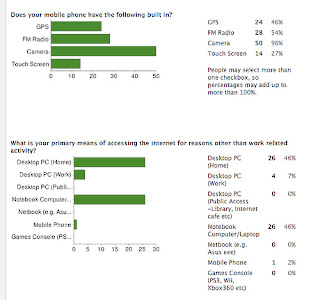Currently, the key to criteria is as follows:
Red = still to be evidenced.
Orange = in the process of being evidenced.
Green = evidenced.
Any words or phrases in blue are links to posts or groups of posts that contain the relevant evidence.
Research & Planning : Level 4 : 16-20 marks
- There is excellent research into similar products and a potential target audience.
- There is excellent organisation of actors, locations, costumes or props.
- There is excellent work on shotlists, layouts, drafting, scripting or storyboarding.
- Time management is excellent.
- There is an excellent level of care in the presentation of the research and planning.
- There is excellent skill in the use of digital technology or ICT in the presentation.
- There are excellent communication skills.
Evaluation : Level 4 : 16-20 marks
- There is excellent understanding of the forms and conventions used in the productions.
- There is excellent understanding of the role and use of new media in various stages of the production.
- There is excellent understanding of the combination of main product and ancillary texts.
- There is excellent understanding of the significance of audience feedback.
- There is excellent skill in choice of form in which to present the evaluation.
- There is excellent ability to communicate.
- There is excellent use of digital technology or ICT in the evaluation.
Main Media Text : Film : Level 4 : 32-40 marks
- holding a shot steady, where appropriate;
- framing a shot, including and excluding elements as appropriate;
- using a variety of shot distances as appropriate;
- shooting material appropriate to the task set;
- selecting mise-en-scène including colour, figure, lighting, objects and setting;
- editing so that meaning is apparent to the viewer;
- using varied shot transitions, captions and other effects selectively and appropriately;
- using sound with images and editing appropriately for the task.
Where a candidate has worked in a group, an excellent contribution to construction is evident.
Subsidiary Media Task : Poster : Level 4 : 9-10 marks
- using IT appropriately for the task set;
- showing understanding of conventions of layout and page design;
- showing awareness of the need for variety in fonts and text size;
- accurate use of language and register;
- appropriately integrating illustration and text;
- framing a shot, including and excluding elements as appropriate;
- using a variety of shot distances as appropriate;
- shooting material appropriate to the task set;
- selecting mise-en-scène including colour, figure, lighting, objects and setting;
- manipulating photographs as appropriate to the context for presentation, including within text, within particular IT programmes, cropping and resizing.
Where a candidate has worked in a group, an excellent contribution to construction is evident.
Subsidiary Media Task : Magazine Review : Level 4 : 9-10 marks
- using IT appropriately for the task set;
- showing understanding of conventions of layout and page design;
- showing awareness of the need for variety in fonts and text size;
- accurate use of language and register;
- appropriately integrating illustration and text;
- framing a shot, including and excluding elements as appropriate;
- using a variety of shot distances as appropriate;
- shooting material appropriate to the task set;
- selecting mise-en-scène including colour, figure, lighting, objects and setting;
- manipulating photographs as appropriate to the context for presentation, including within text, within particular IT programmes, cropping and resizing.
Where a candidate has worked in a group, an excellent contribution to construction is evident.







